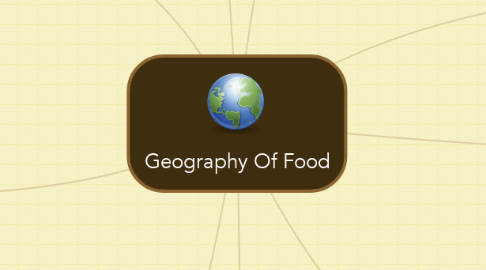Geography Of Food
by Foo Wen


1. Problems due to intensifying food production
1.1. Irrigation -Salinisation of soil -Waterlogging
1.2. Chemicals -Imbalance of soil nutrients -Water pollution -Eutrophication
2. Trends In Food Consumption
2.1. DC -Consuming more non-staples -Consumption of staple food not much of an increase
2.2. LDC -Consuming more non-staples and staples
2.3. Overall: DCs still consuming more food than LDCs
3. Impacts of variation in food consumption
3.1. -Starvation -Obesity -Malnutrition
4. Responses to variations
4.1. International Scale -UN World Food Programme
4.2. National Scale -Food subsidies -Stock piling
5. Factors affecting productivity
5.1. Political -Government policies
5.2. Physical -Climate -Relief -Soil
5.3. Economic -Capital -Demand
5.4. Social -Land tenure -Land fragmentation
5.5. Technology
5.5.1. -Green revolution >HYVs >Machines >Chemicals <Fertilisers, Pesticide, Herbicides... etc> >Irrigation
5.5.2. -Blue Revolution >Antibiotics >Growth hormones >Growing conditions
6. Types Of Food
6.1. Staple <Necessary for survival> -Cereal -Rice -Roots and Tubers -Pulses
6.2. Non-Staple <Consumed for nutrients> -Meat -Vegetable
7. Reasons for variations in food consumption
7.1. Food Security
7.1.1. Affordability -Purchasing power
7.1.2. Stability -Natural factors >Disasters >Spread of diseases -Human Factors >Wars and conflict
7.1.3. Accessibility -Transportation -Availability of food outlets -Trade -Globalisation
